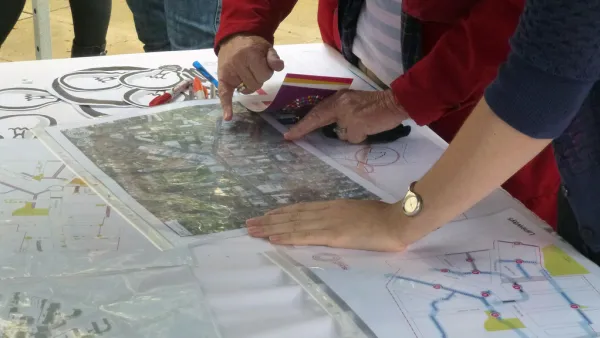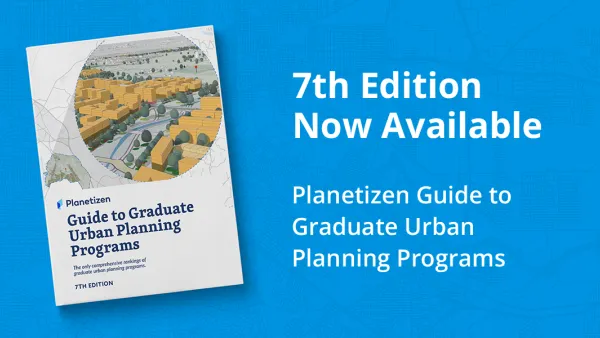"Popular games that invite players to take on the role of developer or city planner are a familiar part of the cultural landscape," according to this article.

Emma Zehner shares insight into a game developed by Carlos Morales-Schechinger and Martin Smolka to teach the principles of land markets. The name of the game: GIROS, which in Spanish means both "transaction" and "turning around," according to Zehner.
"GIROS has been played well over 150 times and inspired spinoffs in most of Latin America, and in the Netherlands, Taiwan, Ghana, Kenya, the Philippines, and other countries. Participants have ranged from urban planning students to high-level public officials."
"Depending on the decisions players make, the game can take many forms. But at least two takeaways, evident since the game’s origins, always emerge. The first is that land value is not intrinsic, but is instead shaped by factors including transportation costs, land use regulations, taxation, and other externalities. The second takeaway, which the Lincoln Institute is fully embracing as part of its current instructional design work, is that games are a seriously important part of land policy education."
Zehner is writing for the Lincoln Institute of Land Policy, so the article is, to a degree, promotional of the agenda and programs of that organization, but the lessons of this examination should be apparent to a broad planning-interested audience. We've all played Monopoly, after all.
Monopoly was created in 1903 by Henry George aficionado Elizabeth Magie, then bought by the Parker Brothers in the 1930s and transformed into the capitalist game known around the world today. More modern digital games like SimCity, in which players build and manage urban areas, and Minecraft, which places players in an undeveloped landscape with the tools they need to build cities and other structures, have kept the tradition going.
There are more examples of planning-related games of varying levels of popularity to be listed, but the idea of games and play hasn't yet found traction in planning pedagogy commensurate with its potential. Making more use of games could fill significant gaps in the planning curricula all over the world, including in the United States.
FULL STORY: Game Time: Active Learning Puts a Spin on Urban Planning Education

National Parks Layoffs Will Cause Communities to Lose Billions
Thousands of essential park workers were laid off this week, just before the busy spring break season.

Retro-silient?: America’s First “Eco-burb,” The Woodlands Turns 50
A master-planned community north of Houston offers lessons on green infrastructure and resilient design, but falls short of its founder’s lofty affordability and walkability goals.

Delivering for America Plan Will Downgrade Mail Service in at Least 49.5 Percent of Zip Codes
Republican and Democrat lawmakers criticize the plan for its disproportionate negative impact on rural communities.

Test News Post 1
This is a summary

Test News Headline 46
Test for the image on the front page.

Balancing Bombs and Butterflies: How the National Guard Protects a Rare Species
The National Guard at Fort Indiantown Gap uses GIS technology and land management strategies to balance military training with conservation efforts, ensuring the survival of the rare eastern regal fritillary butterfly.
Urban Design for Planners 1: Software Tools
This six-course series explores essential urban design concepts using open source software and equips planners with the tools they need to participate fully in the urban design process.
Planning for Universal Design
Learn the tools for implementing Universal Design in planning regulations.
EMC Planning Group, Inc.
Planetizen
Planetizen
Mpact (formerly Rail~Volution)
Great Falls Development Authority, Inc.
HUDs Office of Policy Development and Research
NYU Wagner Graduate School of Public Service





























